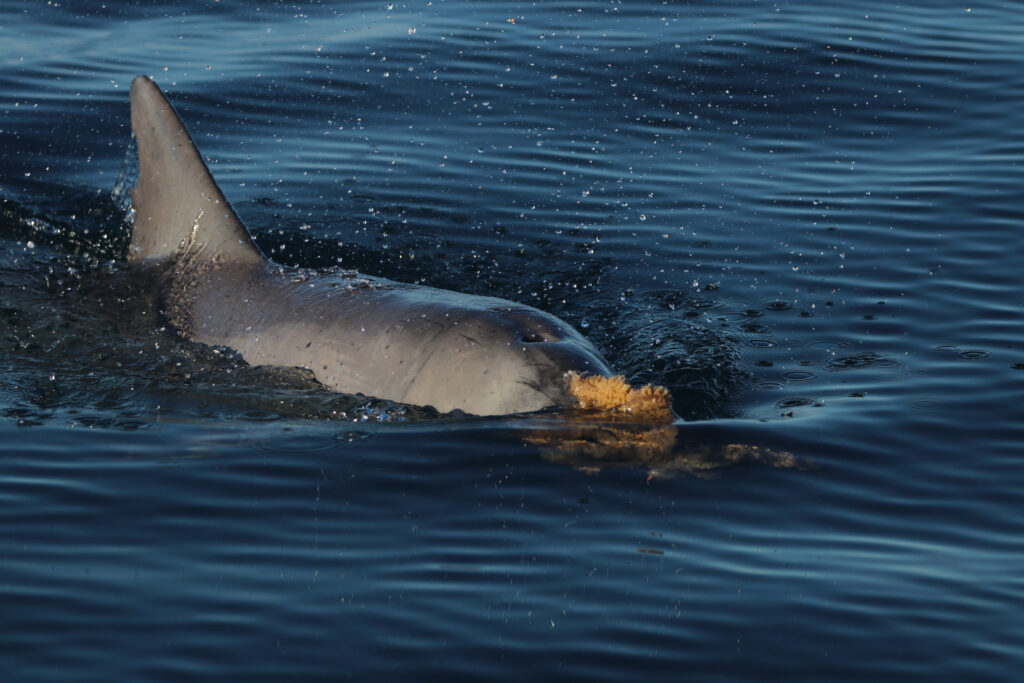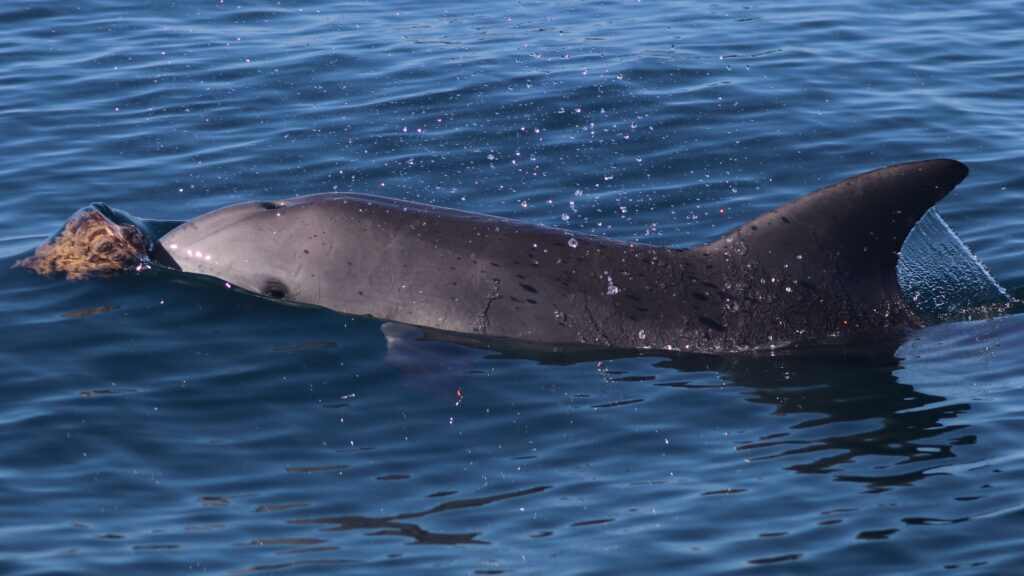While humans are often seen as the quintessential example of cultural evolution, several other mammalian species, such as the Great Apes and certain marine mammals, also demonstrate cultural diversity between and even within populations. One remarkable example of such intrapopulation cultures can be found in the population of Indo-Pacific bottlenose dolphins in Shark Bay, Western Australia.
Within this community, foraging practices are passed down from mother to offspring. Among these highly specialized techniques, the fascinating behaviour known as “sponging” is a prime example, showing such a matrilineal transmission pattern. Only in Shark Bay, dolphins use marine sponges to aid in their hunting, and interestingly, this practice is limited to two specific matrilines – one located in the eastern gulf, and the other in the western gulf.

Using more than 20 years of genetic and observational data, my research focuses on comparing spongers across the entirety of Shark Bay to uncover the mechanisms by which this exceptional foraging technique spread through the different gulfs. Through statistical models, I aim to explore the conditions that led to the current genetic and geographical patterns. These findings will provide us with a better understanding of the evolution of non-human cultures, how such complex patterns can emerge, and how different environments influence these evolutionary processes.

